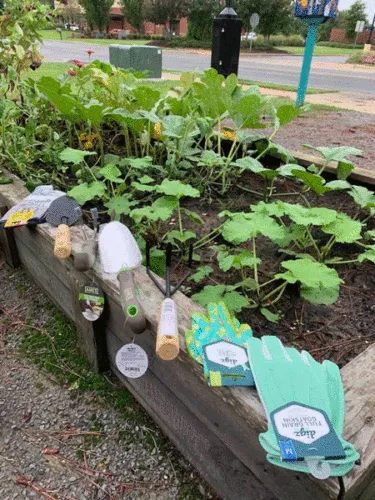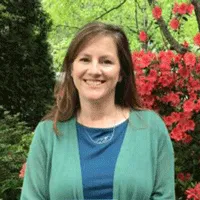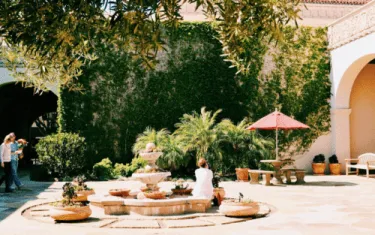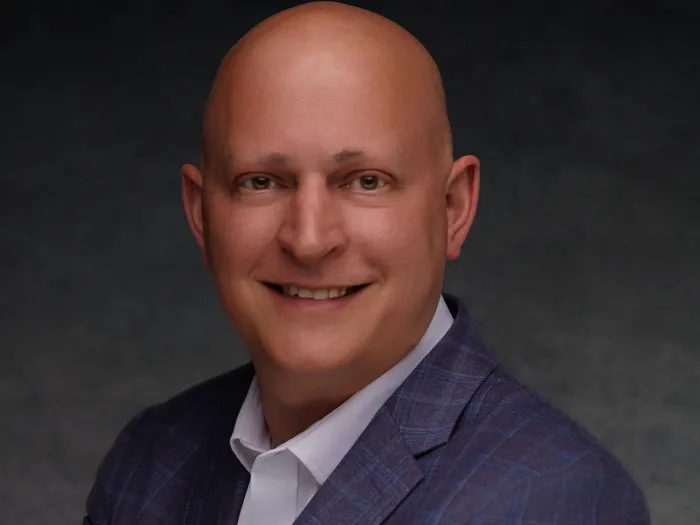Presbyterians for Earth Care webinar touts urban tree canopies and edible landscapes
Two experts share their experiences and helpful suggestions for churches during an hour-long online event


LOUISVILLE — If establishing edible landscapes and climate resilient communities is the goal, Presbyterians for Earth Care provided at least some of the answers during an informative webinar Wednesday. Watch the hour-long broadcast ">here.
PEC invited Scharmel Roussel, executive director of Arkansas Interfaith Power & Light, and the Rev. Dr. Shelly Barrick Parsons, executive director of Richmond, Virginia-based Capital Trees, to talk about work toward those goals in their regions — and how faith communities and individuals can do their part.
Arkansas Interfaith Power & Light has been awarded several environmental justice grants related to regenerative agriculture from federal agencies including the Environmental Protection Agency, the U.S. Department of Agriculture and the Natural Resources Conversation Service. A current “Grow More Food Where People Live” grant supports community gardens producing fruits and vegetables that go to food distribution efforts in low-wealth areas. The three-year grant has trained dozens of urban farmers, student interns and volunteers on the benefits of Earth-friendly agriculture methods that conserve water and protect soil health.

“We envision resilient communities that gather around locally sustainable food systems,” Roussel said. “We intend to demonstrate we can do healthy feeding outreach to those in need while at the same time reducing our carbon footprint.”
The USDA estimates that agriculture contributes 9% of greenhouse gases, while the EPA says it’s 10%, Roussel noted. Both agencies “partner to advance sustainability in growing food.”
Part of the problem is our diet, which for many Americans is meat-based. “Big agriculture is not feeding America. It’s feeding livestock,” Roussel said. Last month, The Washington Post reported on University of California at Berkeley research that uses gene editing to eliminate cattle methane emissions.
At Bethlehem House in Conway, Arkansas, a student’s capstone project was to install garden beds so residents could grow, harvest and cook their food. “Regenerative” and “genesis” come from the same root word, Roussel pointed out. “It has to do with new life.”
Helpful steps people can take include reducing lawn sizes and installing pollinator gardens instead, Roussel said. Churches can build a community garden with a compost system. They can also add a Little Free Pantry.
City of Hope Outreach in Conway has impacted nearly 16,000 neighbors, Roussel said. Its community garden has helped divert nearly 30,000 pounds of produce from the landfill to food pantries and compost systems. Nearly 60 interns have been involved.
“The fruit of justice will be peace,” the prophet Isaiah writes. Roussel added that food justice is related to environmental justice, social justice and peace.

Barrick Parsons said it’s Capital Trees’ vision “to build a greener, more livable Richmond.”
In addition to the better-known benefits trees provide in an urban landscape — including reducing the impacts of heat islands, improving air quality, supporting wildlife, reducing erosion, improving soil quality and mitigating the impacts of floodwaters —trees also improve mental and physical health, she said. One study indicated as little as 30 minutes in a greenspace once a week improves our well-being.
Trees can even build community and cohesion, she said. A 2019 University of Vermont study showed park visitors in San Francisco posted happier Tweets than others. In recent years, “a big focus in conservation has been on monetary benefits — like: how many dollars of flood damage did we avoid by restoring a wetland?” said Taylor Ricketts, the study’s co-author. “But this study is part of a new wave of research that expands beyond monetary benefits to quantify the direct health benefits of nature. What’s even more innovative here is our focus on mental health benefits — which have been really underappreciated and understudied.”
Or, as Barrick Parsons put it, “At the spiritual level, trees help us be more mindful and compassionate. They help draw people together.”
Capital Trees has also shown that illegal practices including redlining have resulted in diminished tree canopies in neighborhoods of color. Redlined neighborhoods have up to 30% less tree canopy, which inhibits not only the availability of shade but the evapotranspiration process, which has a cooling impact on urban neighborhoods.

“Trees are a scalable and affordable solution,” she said. Churches can help by partnering with organizations that give trees away and by learning, meeting, listening, engaging and partnering with neighbors who are impacted by having fewer trees. “Take time to get to know the community with less tree canopy percentage,” she suggested, and “advocate and prioritize retaining trees and tree canopy before, during and after” new development occurs.
“Churches can be places for people to gather and work on community health and well-being,” she said. “It’s a way to raise awareness and it draws people into conversations about larger initiatives.”
You may freely reuse and distribute this article in its entirety for non-commercial purposes in any medium. Please include author attribution, photography credits, and a link to the original article. This work is licensed under a Creative Commons Attribution-NonCommercial-NoDeratives 4.0 International License.




